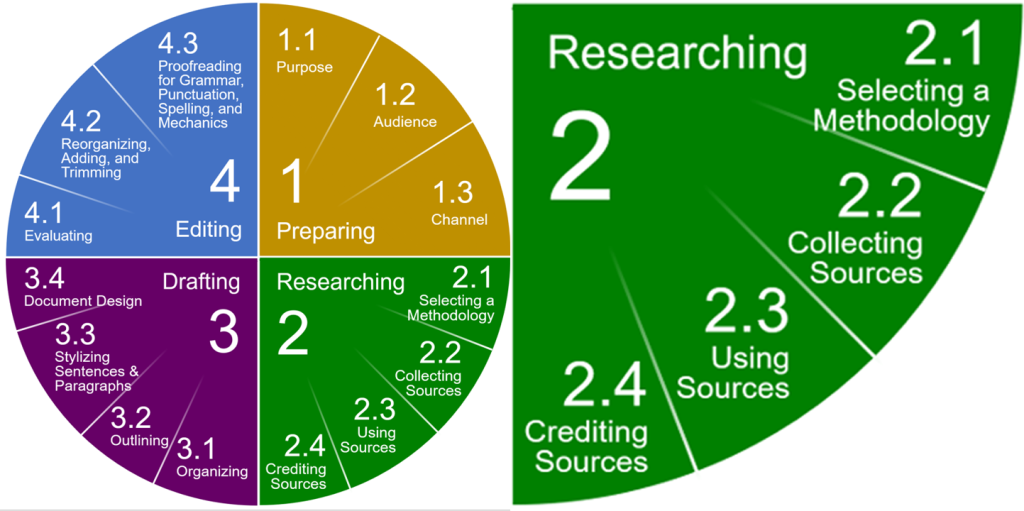3.0: The Writing Process II: Researching
Chapter Learning Objectives
- Determine the appropriate research methodology that meets the needs of the audience.
- Distinguish between formal and informal research.
- Quote source text directly with accuracy and correct punctuation.
- Use effective reading strategies to collect and reframe information from a variety of written materials accurately.
- Locate, select, and organize relevant and accurate information drawn from a variety of sources appropriate to the task.
- Integrate and document information using commonly accepted citation guidelines.
Once you’ve identified your purpose for writing, profiled your audience, and selected the appropriate channel (Stage 1 in the writing process covered in Ch. 2), next you must gather the information that your audience needs. From the shortest informative email to the sprawling analytical report, most professional messages involve relaying information that was looked up—that is, they involve research. Employers value employees who are resourceful, whose research skills go well beyond Google-searching on the internet and focusing on the top few results like anyone can do. Whether such in-demand employees get the needed information from a print book in a library, a manual from a database on a company intranet, an article from a subscription database on the internet, or simply by asking a reputable authority such as a veteran co-worker, they prove their value by knowing where to find valuable information, how to use it appropriately, and how to document it if necessary.

Chapter 3 Sections
This chapter has been adapted from the following:
“Chapter 3: The Writing Process 2: Researching” in Communication at Work Copyright © 2019 by Jordan Smith is licensed under a Creative Commons Attribution 4.0 International License, except where otherwise noted.

